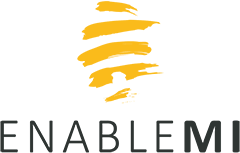In short
-
Maximum amount
Situation-dependent
-
Remaining budget
8.000.000.000
-
Applications open from
7 Ocober 2025
-
Applications open until
6 November 2025
-
Subsidy percentage
Depending on base amount, base energy price, and market compensation
- The SDE++ (Stimulation of Sustainable Energy Production and Climate Transition) program focuses on the large-scale rollout of technologies that produce renewable energy and reduce CO₂ emissions.
- The subsidy is available to companies and non-profit organizations in sectors such as industry, mobility, electricity, agriculture and the built environment.
- The SDE++ supports a wide range of technologies, divided into five main categories: Renewable electricity (such as solar PV and wind), renewable gas, renewable heat, low-carbon heat (such as industrial heat pumps) and low-carbon production (such as hydrogen and carbon capture and storage).
- The subsidy is an operating subsidy, managed by the Netherlands Enterprise Agency (RVO), and is paid out as soon as your installation is operational.
- The amount of the subsidy depends on the technology chosen and the amount of CO₂ reduction you achieve, and is awarded for a period of usually 12 or 15 years.
Goal: Large-scale rollout of the climate transition
With the SDE++ (Stimulation of Sustainable Energy Production and Climate Transition) subsidy, the government encourages the large-scale rollout of technologies that generate renewable energy and reduce carbon dioxide (CO₂) emissions. The scheme makes investments in sustainable projects financially attractive by offsetting the “unprofitable portion”: the difference between the cost of the sustainable technology and the potential market returns.
For whom and for which techniques?
The Sustainable Energy Production and Climate Transition Incentive Scheme (SDE++) aims to support the large-scale rollout of technologies that generate renewable energy and reduce carbon dioxide (CO₂) emissions . The subsidy is available to companies and non-profit organizations active in sectors such as industry, mobility, electricity, agriculture, or the built environment. A crucial requirement is that the applicant is the intended producer who will commission and operate the installation itself.
The focus is on stimulating a broad range of technologies, divided into five main categories:
- Renewable electricity: This includes technologies such as solar PV, wind energy and hydropower.
- Renewable gas: Production of green gas from biomass fermentation and gasification.
- Renewable heat: Heat production from biomass, composting, deep geothermal energy and solar thermal energy.
- Low-carbon heat: Heat generation using technologies such as heat pumps, electric boilers, and the use of residual heat.
- Low-carbon production: CO₂ reduction through hydrogen production, carbon capture and storage (CCS), carbon capture and utilisation (CCU), and advanced renewable fuels.
Provided by the RVO
The application for the SDE++ subsidy is submitted to the Netherlands Enterprise Agency (RVO.nl). Enablemi knows the ins and outs of the application process and will help you formulate a winning application and submit it on time.
The application round has five phases, with the maximum subsidy intensity (the “phase amount” in euros per ton of CO₂ reduction) gradually increasing. This means that projects that can be realized for a lower amount have a better chance of receiving a subsidy in the earlier, more competitive phases.
Compensation based on performance and market prices
The SDE++ is an operating subsidy, meaning you receive it as soon as your installation is operational and actually producing renewable energy or reducing CO₂ emissions. The scheme compensates for the difference between the cost of the sustainable technology and the potential market returns. This difference is called the “unprofitable portion . “
The amount of the subsidy you receive per unit of production (such as kWh or ton CO₂) depends on the technology used and the CO₂ reduction you achieve. The amount is calculated by subtracting the market compensation (the correction amount) from your approved application amount (the base amount). The subsidy is awarded for a fixed period, usually 12 or 15 years , depending on the technology.
About this text: To make it clear and readable for you, we’ve rewritten the legal text of the regulation. This means we must state that no rights can be derived from this text. Please be careful.
Tip from Enablemi


